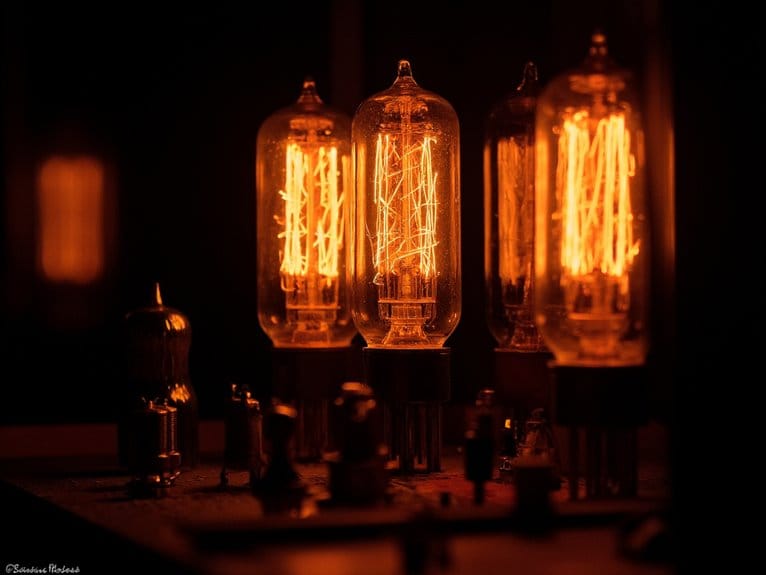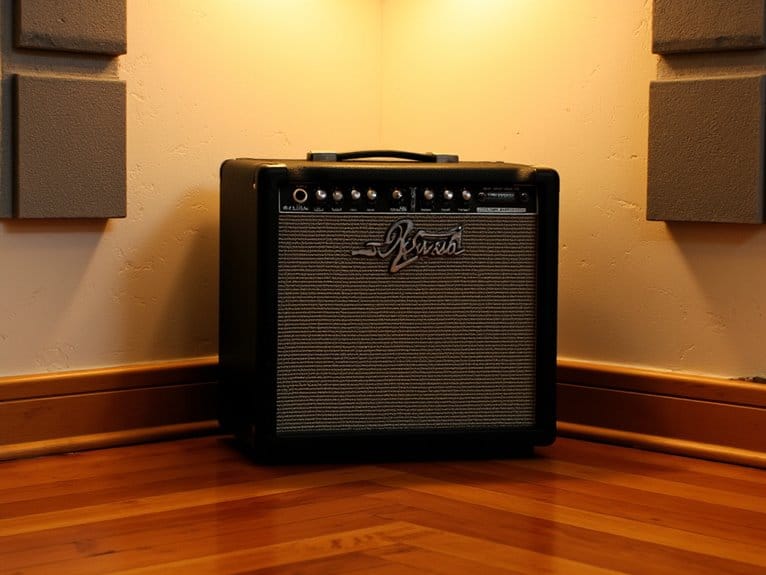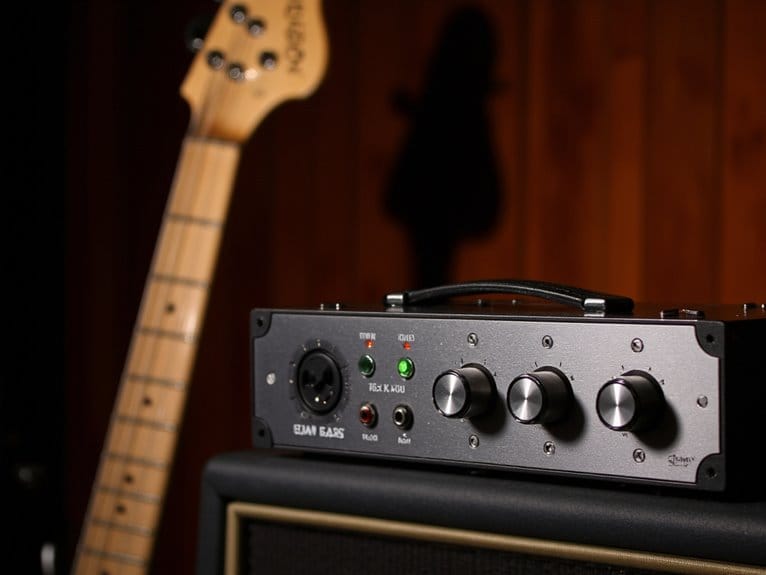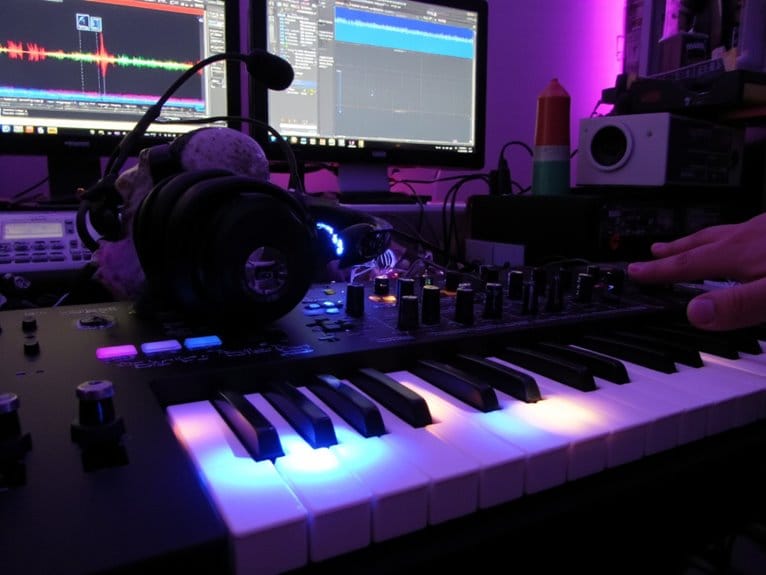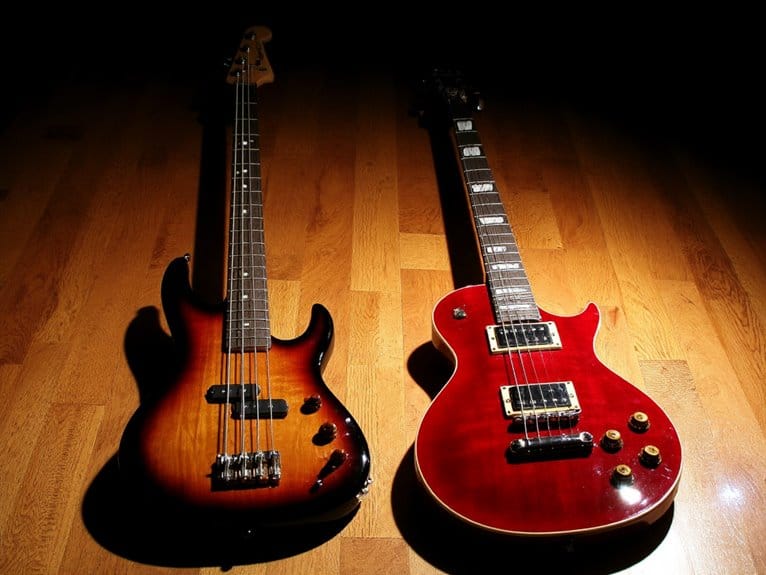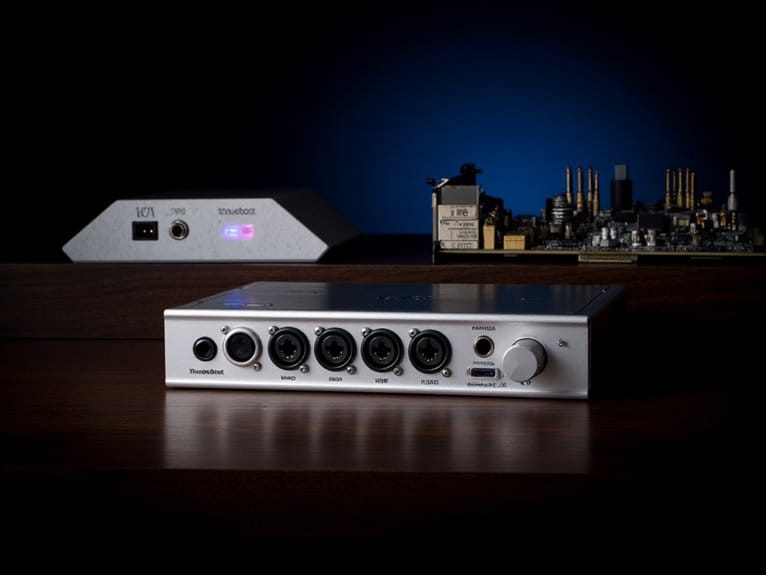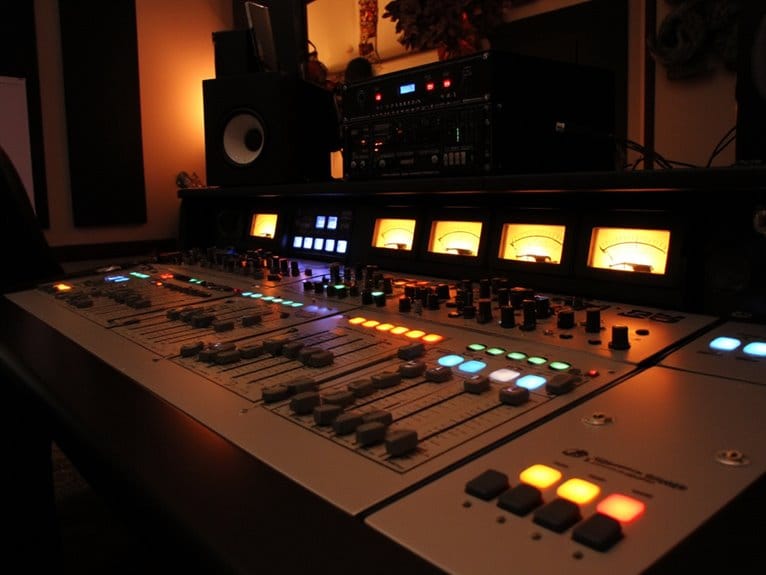Guitar Amplifier Tube Saturation and Natural Compression
When you push your tube amp beyond clean headroom, vacuum tubes naturally compress signal peaks while generating even-order harmonics that add musical warmth and octave-enhanced frequencies. This thermionic saturation doesn’t scale proportionally—instead, it gradually compresses loud passages while preserving quiet dynamics, creating that coveted responsive feel. Different tube types like EL84s and EL34s produce distinct tonal textures, while cathode-bias settings determine when compression engages, offering nuanced control that varies with temperature and playing intensity for authentic musical expression that reveals deeper complexities.
We are supported by our audience. When you purchase through links on our site, we may earn an affiliate commission, at no extra cost for you. Learn more.
Notable Insights
- Tube saturation creates musically pleasing harmonic distortion through even-order harmonics that blend naturally with fundamental frequencies.
- Natural compression occurs from thermionic emission, gradually compressing signal peaks while preserving quiet passages without proportional gain scaling.
- Cathode-bias settings and tube temperature variations influence when compression effects engage and contribute to dynamic response quality.
- Different tube types produce distinct tonal characteristics, with EL84s creating chimey highs and EL34s delivering deeper midrange frequencies.
- Output transformers shape frequency response between 5 Hz and 40 kHz, significantly impacting overall tonal character and saturation behavior.
How Tube Saturation Creates Warmth and Harmonic Enhancement
When you strike a chord through a tube amplifier, the vacuum tubes don’t just amplify your signal—they transform it through a process of harmonic saturation that I’ve found creates some of the most musically pleasing distortion you’ll hear.
The magic happens through even-order tube harmonics, which add octave-enhanced frequencies that blend naturally with your fundamental notes, creating exceptional audio richness without harshness. Well-designed tube amplifiers excel at capturing these musical intricacies through their superior dynamic response capabilities.
This tonal blending occurs because vacuum tubes generate second, fourth, and sixth harmonics that reinforce rather than clash with your original signal. The choice of pickup configurations can significantly influence how these harmonics interact with your amplifier’s tube saturation.
The saturation dynamics respond to your playing intensity, producing smooth compression and bloom that extends harmonically after each note strike, while subtle low-end enhancement thickens your tone naturally. Unlike harsher forms of distortion, this tube saturation provides gentle enhancement that preserves the musical character of your performance rather than overwhelming it. This approach to real-time processing creates consistent performance quality that musicians have relied on for decades.
The Science Behind Natural Compression in Vacuum Tubes
The natural compression you experience with vacuum tubes stems from the fundamental physics of thermionic emission, where heated cathodes release electrons that flow through a vacuum environment in distinctly non-linear patterns.
As your signal amplitude increases, the tube’s gain doesn’t scale proportionally—instead, it gradually compresses peaks while preserving quieter passages through soft saturation curves.
Your bias settings directly influence when this compression kicks in, with cathode-biased configurations typically engaging earlier compression effects due to higher idle currents.
The distortion characteristics emerge from even-order harmonics that mask harsh artifacts, creating that coveted musical warmth.
Temperature-dependent emission stability means your tube’s response varies subtly with operating conditions, contributing to the dynamic, breathing quality that distinguishes vacuum tube compression from rigid solid-state limiting.
Tonal Characteristics and Frequency Response of Saturated Tube Amplifiers
Understanding how compression transforms your signal naturally leads us to examine how saturation reshapes your guitar’s tonal character across the frequency spectrum, where the interplay between vacuum tubes and output transformers creates the distinctive voice that’s defined rock music for decades.
Your amplifier’s output transformers act as bandpass filters, delivering practical frequency response from 5 Hz to 40 kHz while shaping your tone more markedly than tube types alone.
Different tube types offer distinct tonal texture: EL84s produce sparkling, chimey highs with rich upper mids, while EL34s deliver fuller frequency range with deeper midrange presence.
Saturation effects generate even-order harmonics that create musical warmth, occurring mainly in your power tube stage where both grid and plate clipping combine to produce the characteristic hard clipping that makes tube distortion so appealing.
For bedroom practice sessions, many guitarists prefer lower wattage tube amplifiers that achieve saturation at more manageable volume levels.
For guitarists seeking to capture these vintage tube characteristics without the maintenance demands of actual tube amplifiers, overdrive pedals provide an accessible alternative that recreates authentic tube saturation at any volume level.
Practical Applications for Different Guitar Playing Styles
Regardless of whether you’re shredding metal riffs or fingerpicking delicate jazz standards, your amplifier’s saturation characteristics fundamentally shape how your playing style translates into musical expression.
Understanding how different saturation techniques affect your tone allows you to harness expressive dynamics that match your musical intentions, creating a more nuanced and responsive playing experience.
Here’s how saturation applications vary across playing styles:
- Metal players benefit from minimal power tube saturation to maintain note clarity and tightness, relying instead on preamp gain for controlled aggression without sacrificing definition during palm-muted passages.
- Blues and rock guitarists thrive on natural tube breakup that responds fluidly to pick attack, providing that coveted touch-sensitive character that makes bends and vibrato sing with harmonic richness.
- Jazz musicians utilize subtle saturation for gentle compression that evens volume inconsistencies while preserving clean chord clarity and melodic articulation.
- Country guitarists particularly benefit from tube saturation’s natural compression and warm breakup characteristics that complement the clean headroom required for authentic twangy tones and crisp note definition.
While tube amplifiers offer this warm, organic saturation naturally, they do require more maintenance compared to their solid-state counterparts but provide the authentic tonal character that many professional guitarists prefer. For those seeking that quintessential sound, classic tone tube amplifiers are often the go-to choice. They not only enhance the richness of the guitar’s sound but also allow for a dynamic range that solid-state amps struggle to achieve.
Hardware Tubes Vs Digital Saturation Plugin Comparisons
Two decades of heated debates among guitarists have centered on whether hardware tubes or digital saturation plugins deliver superior tone, and I’ve spent countless hours comparing both approaches in studios, practice rooms, and live venues to understand their real-world differences.
You’ll find that tube amps produce naturally warm, harmonically rich distortion with organic compression characteristics that respond dynamically to your playing touch, creating that coveted “alive” feeling many guitarists crave.
However, tube maintenance becomes a significant factor, requiring periodic replacements and careful handling during transport.
Digital saturation plugins offer superior digital reliability, consistent performance without component degradation, and incredible tonal flexibility through presets and seamless DAW integration, though they sometimes lack the unpredictable nuances that make tube saturation feel authentically musical.
Frequently Asked Questions
Can Tube Saturation Damage My Speakers or Other Equipment?
Tube saturation won’t directly damage speakers if you’re using proper impedance matching and power handling. However, maintaining tube health through correct biasing and monitoring speaker resilience during high-output sessions protects your entire signal chain.
On a final note
You’ve now got the knowledge to harness tube saturation’s natural compression and harmonic richness in your own playing. Whether you’re chasing that creamy blues breakup, pushing into rock territory, or exploring jazz’s clean headroom, understanding how tubes respond to your touch will transform your tone. Don’t overthink it—trust your ears, experiment with different gain stages, and let the tubes do what they’ve done best for decades.

